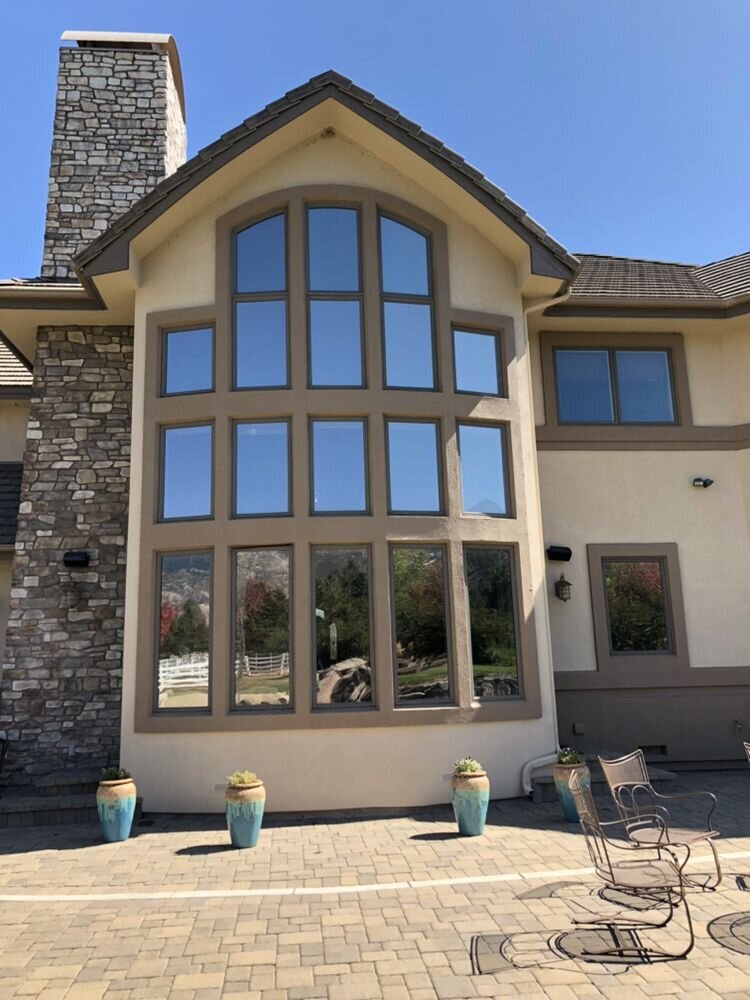Residential Window Tint: Improve Comfort and Minimize Glow Indoors
Wiki Article
Just How Residential Window Tinting Improves Your Home's Energy Performance
Residential window tinting offers a compelling option for homeowners looking for to improve power performance within their space. By using specialized films to home windows, it successfully decreases warm transfer, consequently supporting interior temperature levels and decreasing the need for excessive home heating or air conditioning. This not just curtails power intake yet likewise gives a more comfy environment by reducing glare. Recognizing the nuances of exactly how tinting jobs and choosing the suitable type for your home can be essential. Curiously, what variables should one take into consideration before making this investment?Understanding Window Tinting
Comprehending window tinting is important for property owners looking for to enhance both convenience and power effectiveness in their space. Residential Window Tint. Window tinting entails the application of a thin film to the inside or outside surface of glass windows. This film can significantly regulate the quantity of sunlight and heat that enters a home, thus influencing interior environment problemsThere are different types of home window tinting films offered, each with distinctive properties. The effectiveness of window tinting is commonly measured by its Visible Light Transmission (VLT) percentage, which shows just how much light can pass with the film.
Advantages of Energy Performance
Window tinting not just boosts visual appeals yet also plays a significant role in enhancing energy effectiveness within household rooms. By reducing heat transfer via home windows, tinted movies develop an extra stable indoor climate, which can bring about considerable reductions in power usage for cooling and heating. This power efficiency translates right into lower utility bills, offering property owners with considerable long-lasting savings.
Furthermore, home window tinting enhances the convenience of living areas. By decreasing glare and obstructing unsafe UV rays, colored windows create a more pleasant setting, which can bring about boosted health for passengers. The security versus UV rays also aids protect furniture and floor covering from fading, contributing to the durability of house things.
How Tinting Works
Tinting movies operate through a mix of innovative products and modern technologies developed to control the amount of solar power entering a home. Primarily composed of polyester, these movies typically integrate metallic or ceramic bits that mirror and absorb warmth. This dual capacity permits them to dramatically lower the infiltration of ultraviolet (UV) rays and infrared radiation while permitting visible light to pass through.The effectiveness of window tinting is determined by its solar heat gain coefficient (SHGC), which shows just how much solar energy is transmitted through the home window. Reduced SHGC values are preferable as they signify better warm being rejected. Furthermore, window tints can feature a range of tones, allowing homeowners to tailor their visual preferences while improving power effectiveness.
Additionally, these movies function as a barrier, protecting against heat loss during cooler months by reflecting interior heat back right into the home. This thermal insulation impact matches the cooling advantages obtained during Continue warmer months, adding to a well balanced interior environment year-round. By handling solar power effectively, household window tinting not only improves convenience yet likewise plays a vital function in reducing energy intake and lowering utility expenses.
Choosing the Right Color

There are different kinds of home window films offered, including colored, metalized, and ceramic. Ceramic movies provide excellent heat control without endangering exposure and are very sturdy, making them a popular choice.
Noticeable light transmission (VLT) is an additional critical aspect, as it suggests the quantity of natural light that can pass with the tinted glass. Home owners need to pick a tint with a VLT that complements their lighting preferences while still offering sufficient glare decrease.
In addition, assessing the solar heat gain coefficient (SHGC) can aid identify how well a color can obstruct heat from sunshine. A reduced SHGC indicates better warmth control, eventually boosting energy performance.
Installation and Upkeep Tips
Proper installation and upkeep are vital elements in maximizing the advantages of residential window tinting. Professionals additionally utilize specialized methods and tools, which can boost the toughness and performance of the click for more info tint.Adhering to installation, upkeep is vital to lengthen the life of the window movie. It is recommended to wait at the very least 30 days before cleaning up the colored windows to permit the adhesive to heal fully.
Addressing these concerns immediately can avoid further damage and keep power effectiveness. By adhering to these installment and maintenance tips, home owners can guarantee their home window tinting proceeds to supply substantial power cost savings and comfort for years to come.
Final Thought
In verdict, residential home window tinting offers as an effective service for boosting power performance within homes. By decreasing warm transfer and obstructing dangerous UV rays, window films add to decrease energy intake and boosted indoor comfort.Window tinting involves the application of a thin film to the interior or outside surface of glass home windows. By minimizing heat transfer through home windows, colored movies develop a more stable indoor climate, which can lead to significant decreases in energy consumption for heating and cooling.The effectiveness of home window tinting is determined by its solar warm gain coefficient (SHGC), which indicates how much solar energy is transmitted through the window. By handling solar power properly, domestic home window tinting not only improves comfort however also plays an important function in reducing energy usage and reducing energy costs.
By minimizing heat transfer and blocking harmful UV rays, window films add to reduce power consumption and enhanced interior convenience.
Report this wiki page